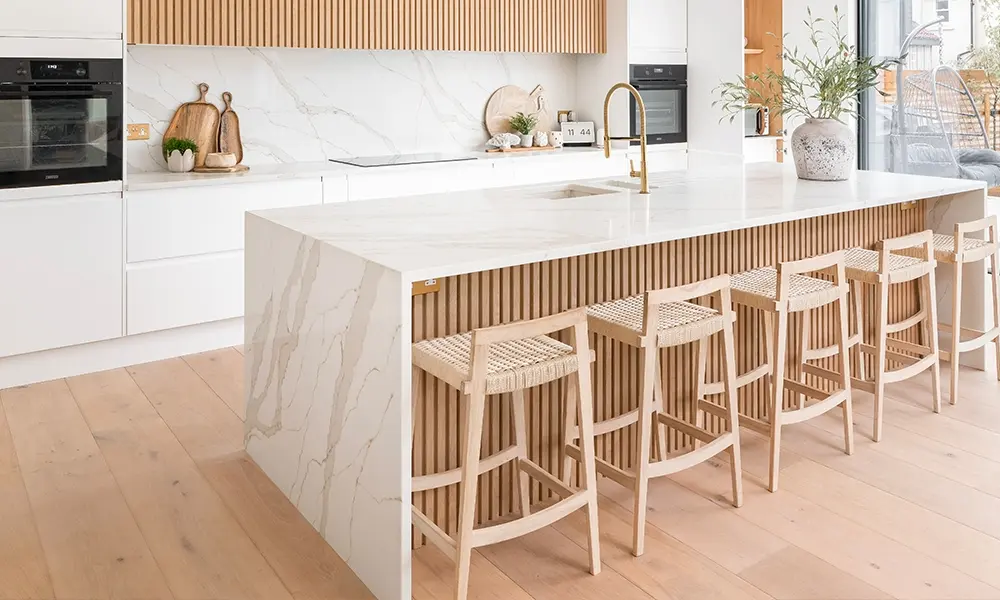Introduction
Your kitchen worktop is more than just a functional surface—it’s the heart of your culinary space where meals are prepared, conversations unfold, and memories are made. Selecting the right worktop involves balancing aesthetics, durability, maintenance requirements, and budget. With countless materials and finishes available today, making an informed decision can transform your kitchen from ordinary to extraordinary. This comprehensive guide will walk you through everything you need to know about selecting, maintaining, and maximizing the value of your kitchen surfaces.
Understanding Different Worktop Materials
Natural Stone Options
Granite remains a timeless choice for homeowners seeking durability and natural beauty. Each slab features unique patterns and veining, ensuring your kitchen has a one-of-a-kind appearance. Granite withstands heat exceptionally well and resists scratches, making it ideal for busy households. However, it requires periodic sealing to prevent staining.
Marble offers unparalleled elegance with its distinctive veining and luxurious appeal. While it creates a stunning visual impact, marble is more porous than granite and demands careful maintenance to preserve its beauty over time.
Engineered and Composite Surfaces
Quartz worktops have surged in popularity due to their non-porous nature and minimal maintenance requirements. Manufactured from natural quartz crystals combined with resins, these surfaces offer consistent patterns and exceptional durability. They resist stains, bacteria, and moisture without needing sealants, making them perfect for modern, hygienic kitchens.
Solid surface materials provide seamless installations and come in numerous colors and patterns. These synthetic options can be repaired if scratched and offer excellent design flexibility for contemporary spaces.
Traditional and Budget-Friendly Choices
Laminate worktops have evolved significantly, now offering realistic stone and wood effects at a fraction of the cost. Modern laminates are more durable than their predecessors, though they remain susceptible to heat damage and water penetration at seams.
Wooden worktops bring warmth and natural character to kitchens. Oak, walnut, and beech are popular choices that develop a beautiful patina over time. Regular oiling maintains their appearance and provides water resistance.
Key Factors to Consider When Selecting Your Worktop
Lifestyle and Usage Patterns
Evaluate how you use your kitchen daily. Families with young children might prioritize durability and stain resistance, while avid cooks may value heat resistance and ample preparation space. If you entertain frequently, aesthetics and visual impact become equally important alongside practical considerations.
Maintenance Requirements
Consider the time and effort you’re willing to invest in upkeep. Some materials require regular sealing or special cleaning products, while others need only soap and water. Understanding maintenance demands upfront prevents disappointment and ensures your surfaces remain beautiful for years.
Budget Considerations
Quality Kitchen worktops represent a significant investment, but options exist across all price ranges. While natural stones command premium prices, engineered alternatives often provide comparable aesthetics and performance at lower costs. Factor in installation expenses, as complex materials like granite require professional fitting.
Installation and Professional Considerations
Proper installation is crucial for worktop longevity and performance. Professional templating ensures accurate measurements, particularly important for L-shaped kitchens or spaces with unusual dimensions. Experienced installers manage seam placement strategically, making joins less noticeable while ensuring structural integrity.
Adequate support is essential, especially for heavier materials like stone. Cabinets must be level and sturdy enough to bear the weight without sagging. Discuss reinforcement requirements with your installer during the planning phase.
Maintenance Tips for Long-Lasting Beauty
Regular cleaning with appropriate products preserves your worktop’s appearance. Avoid abrasive cleaners that can dull surfaces or damage protective coatings. Use cutting boards consistently to prevent scratches, and always use trivets or heat-resistant mats under hot pans.
For natural stone surfaces, establish a sealing schedule based on manufacturer recommendations. Water absorption tests help determine when resealing is necessary—simply place water droplets on the surface and observe if they bead or absorb within minutes.
Address spills immediately, particularly acidic substances like lemon juice or wine that can etch or stain certain materials. Prompt attention prevents permanent damage and maintains your investment’s value.
FAQ Section
How long do kitchen worktops typically last?
With proper care, quality worktops can last 15-25 years or longer. Natural stone and quartz surfaces often outlast laminate options, which typically need replacement after 10-15 years depending on usage and maintenance.
Can I install worktops myself, or should I hire professionals?
While laminate worktops are suitable for experienced DIY enthusiasts, heavy materials like granite and quartz require professional installation. The specialized tools, expertise, and physical demands make professional fitting worthwhile for premium materials.
What’s the most hygienic worktop material?
Quartz and solid surface materials are most hygienic due to their non-porous nature, which prevents bacteria and moisture penetration. These surfaces don’t require sealing and clean easily with standard household cleaners.
How can I protect my worktop from heat damage?
Always use trivets, hot pads, or heat-resistant mats under hot cookware. While materials like granite tolerate high temperatures, sudden temperature changes can cause cracking. Even heat-resistant surfaces benefit from protective barriers.
Are sustainable worktop options available?
Yes, recycled glass surfaces, bamboo, and reclaimed wood offer eco-friendly alternatives. Some quartz manufacturers incorporate recycled materials, while responsibly sourced timber provides renewable options for environmentally conscious homeowners.
Conclusion
Choosing the perfect kitchen worktop requires balancing practical needs with aesthetic preferences and budget constraints. By understanding different materials’ characteristics, maintenance requirements, and installation considerations, you can make a confident decision that enhances your kitchen’s functionality and beauty. Whether you prioritize durability, visual appeal, or low maintenance, today’s market offers solutions for every requirement. Invest time in research and professional consultation to ensure your selection serves your household well for decades to come, creating a kitchen space that truly feels like home.

